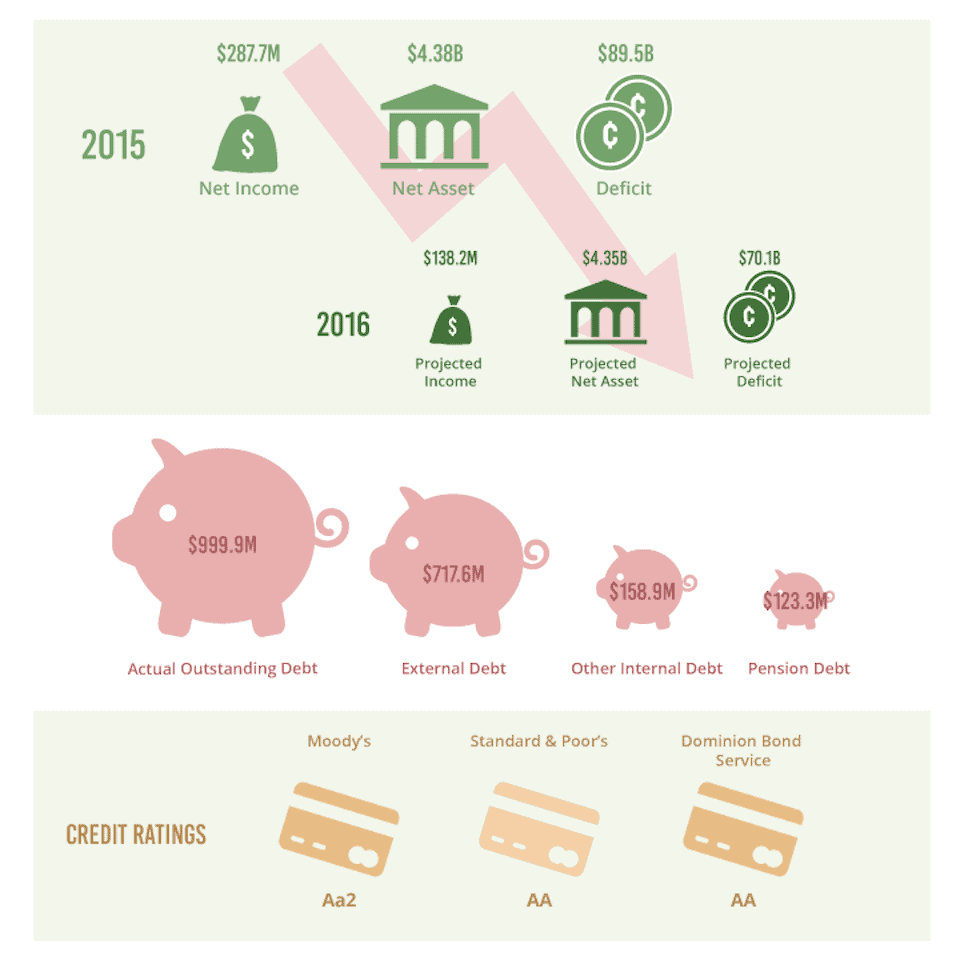The University of Toronto’s financial results and report on debt reveal that U of T forecasts a net income of $138.2 million and projects net assets to be at $4.35 billion. The forecasted net income is a decrease from last year’s net income of $287.8 million, while the value of last year’s net assets was $4.38 billion.
The forecast, which includes the university’s projected revenue, expenses, net income, and changes in net assets for the fiscal year ending on April 30, 2016, was presented on January 25 to the Governing Council Business Board. The board oversees the university’s financial transactions.
These forecasts are based on a projected investment return of 0.4 per cent, an endowment payout of $78.3 million, an increase of $96.4 million in reserves, and an increase of $23.7 million for future divisional capital expenditures. The university acknowledges that it only has interim information regarding divisionally controlled revenue and expenses, and that investment returns are uncertain.
The university also projects a deficit of $70.1 million, which is a drop from the $89.5 million deficit run during the 2015 fiscal year. This has been partially attributed to the $22.9 million increase in tuition fee revenue, correlated with an increase in enrolment from international undergraduate students, who currently pay over five times more than domestic students.
The debt report
This report is comprised of three parts: the annual debt strategy review, the status report on debt, and the credit report by Moody’s Investors Service.
According to the status report on debt, the university allocated $1.218 billion in borrowing room, with $150 million allocated to pensions and $200 million allocated to other internal debt. The university also allocated $868 million for external components, which includes $15 million for the expansion and renovation of the Recreation Wing at UTSC.
The University of Toronto’s actual outstanding debt as of October 2015 totals $999.9 million. Of that figure, $123.3 million is pension debt while $158.9 million comes from other internal debt.
External debt makes up $717.6 million, the bulk of which is in the form of unsecured bonds issued by the university.
The university’s credit rating is unchanged from last year; Moody’s gave the university an Aa2 rating, while Standard & Poor’s and Dominion Bond Service assigned a rating of AA. These ratings are considered investment grade.
Currently, U of T’s debt policy limit is set at a debt burden ratio of five per cent. This means that the debt and interest should not exceed five per cent of total expenditures. This is only the university’s acceptable limit; the recommended upper limit is set at seven per cent.
According to the annual debt strategy review, the university’s debt policy limit was set to $1.401 billion as of April 2015, and the university expects this to increase by an additional $350 million to $1.75 billion by April 2021.
The review also states that a one per cent increase in the interest rate would result in the reduction of the limit between $53 million and $88 million, while a two per cent increase would see a reduction between $95 million and $158 million.


